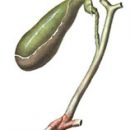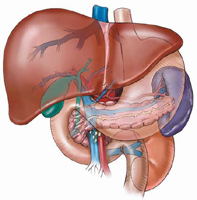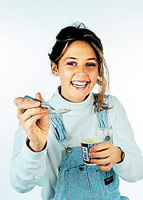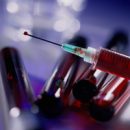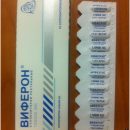Viral hepatitis is a serious infectious disease accompanied by a decrease in appetite, weakness, headache, skin itch and other symptoms. Qualified care will facilitate the state of a person sick with hepatitis, and will help his speedy recovery.
Content
Viral hepatitis: features and symptoms of the disease
Viral hepatitis (inflammation of the liver tissue) is an acute infectious disease.
Because when hepatitis, the yellow color of the skin and mucous membranes is developing, it is more known as an infectious jaundice.
In some cases, viral hepatitis may, however, leak without the yellowing of the skin. The duration of the hidden period of the disease fluctuates in large limits, rangeing from 7 to 50 days. The period of atypical manifestations of the disease during jaundice ranges from 3 to 10 days. The main symptoms at this time are the decline in appetite, nausea, vomiting, weakness, headache and abdominal pain, diarrhea, intermittent with constipation, skin itch in the whole body. In some cases, the temperature is slightly elevated, runny nose and cough. In the future, the jaundice period begins, and the transition to it is gradually. The urine of the patient becomes dark, a chair of light, clay color, eye proteins and a paws acquire a yellowish color, in the future the whole leather can yellow. The intensity of the jaundice is very different. Abdominal pain is usually localized in the right hypochondrium, t. E. in the field of liver. The jaundice period lasts 7—20 days.
 In terms of severity, the flow distinguishes light, medium, heavy and superheavy form of the disease. Since the hepatitis virus applies to the patient's saliva droplets, as well as with its urine and feces, at home to prevent the transmission of infection is almost impossible. In this regard, it is an obligatory placement of a patient to an infectious hospital.
In terms of severity, the flow distinguishes light, medium, heavy and superheavy form of the disease. Since the hepatitis virus applies to the patient's saliva droplets, as well as with its urine and feces, at home to prevent the transmission of infection is almost impossible. In this regard, it is an obligatory placement of a patient to an infectious hospital.
After hospitalizing a sick jaundice to him, a brigade of SanEpids arrives at the house and produces disinfection of the sick and toilet room.
It is also necessary to take into account the fact that the hospital is much easier than at home to observe the necessary patient diet. Mandatory treatment in the first stage is intravenous infusion of medicinal liquids, which is also impossible to do at home. The patient is in the hospital before recovery, but not less than 30 days from the beginning of the disease or 3 weeks since the appearance of jaundice.
After discharge from the hospital, schoolchildren hold at home for not at least 10 days, preschoolers up to 1 month. At this time, the child does not receive drugs anymore, but a great place in his treatment continues to occupy a diet.
Nutrition of the patient hepatitis
When leaving for sick infectious jaundice it is very important to comply with the correct diet. The child must eat 4—6 times a day. The amount of food eating in one reception may be no less than the usual.
Fat food (oily meat, roasted on fat potatoes, fatty soups and pies, meat broths), it is necessary to limit oil consumption. Preservation, marinades, smoked. The spices, sharp food, peas, beans are also not recommended. Sweets are not allowed chocolate, chocolate candies, nuts, halva, whipped cream, ice cream, cream cakes and cakes. It is recommended to give a child cottage cheese, vegetables, fruits, cereals, kislets, compotes, fish and meat in boiled form. The child can get one egg per day. Recommended chopped food, as well as food in the form of various purees. From drinks are allowed diluted juices, tea from rosehip fruits, mineral waters («Board», «Essentuki No. 4», «Essentuki No. 17», «Vyarsk»). Mineral water should be consisted of room temperature 3 times a day before meals by half or one cup.
Observation and care for children after recovery
For six months, the child should not be engaged in physical education, take participation in training, swim, since the physical activity should be small.
Children in contact with the sick hepatitis are prophylactically introduced by Gammaglobulin. Behind the urine and chairs in such children need to be observed within 50 days.

